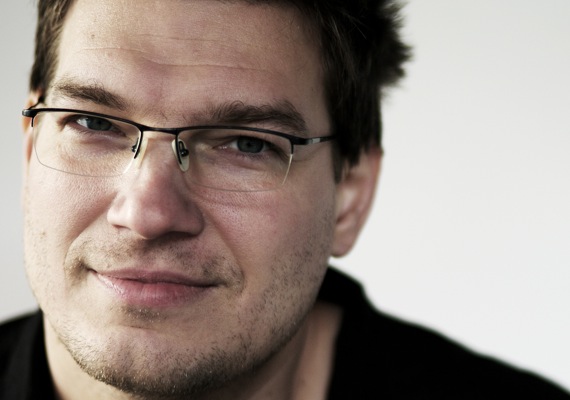Nikolaus Geyrhalter • Director
"Homo Sapiens is open to interpretation"
- Nikolaus Geyrhalter breaks down his latest opus, Homo Sapiens, at the Cinéma du Réel Festival, which dedicated a focus to the Austrian documentary maker

Digging a passionate and uncompromising artistic groove for himself marked, among others, by The Year after Dayton (1997), Pripyat (1999), Our Daily Bread (2005), Abendland [+see also:
film review
film profile] (2011) and Over the Years [+see also:
trailer
film profile] (2015), Austrian documentary maker Nikolaus Geyrhalter unveiled his new opus, Homo Sapiens [+see also:
trailer
interview: Nikolaus Geyrhalter
film profile], in the Forum of the Berlin Film Festival, a fascinating and almost post-apocalyptic piece that explores a modern world in which the human race has been wiped out and nature has come out on top. Cineuropa caught up with the director in Paris during the 38th Cinéma du Réel Festival, which has dedicated a focus to him.
Cineuropa: Where did the idea for Homo Sapiens come from?
Nikolaus Geyrhalter: It’s a project that I thought up a long time ago. I shot it at the same time as Over the Years, which centred around people whilst Homo Sapiens is the exact opposite. I liked this idea of making two films in parallel and being able to thus swing from one world to the other. I also like to look at things that have already happened close up, like how I looked at Chernobyl in Pripyat for example. If you want to analyse Homo Sapiens in the same way, you could see it as a film about a civilisation that has come and gone. But the film is also about the present-day: from this point of view, it’s definitely a documentary, even if you can also interpret it as portraying the future.
How did you find the shooting locations at the heart of the film’s storyline; incredible places that have been abandoned?
We did a huge amount of Internet-based research. Finding locations turned out to be quite easy, but finding out exactly where they are proved a lot more difficult. Moreover, in several cases we had to keep this a secret, as even once we had permission to shoot, the owners didn’t want us to say exactly where these places were to avoid anyone else visiting or thefts, graffiti etc. To start off with, we only looked for abandoned places, but the film would have soon become boring if we’d gone in that direction, so we also focused on very specific places, the bearers of a good dose of social critique such as abattoirs and military bases. Shooting took place over a period of five years, all over Europe and in Japan, America and Argentina.
The editing and the soundtrack play a crucial role. How did you go about these two elements?
The editing was done bit by bit whilst we were shooting the film. We filmed something, looked at what we could do with the material, took stock of what was missing and went back to shoot what we needed to add. As for the sound, we initially tried to record this on location, but we quickly realised that this would not be possible as there are always signs of human life around. So we soon made the decision to not have the soundman on location, which allowed us to save money that we were then able to put towards the creation of a soundtrack that plays with the sounds of the wind, water and birds, and influenced the length of the sequences in the film.
The relatively timeless feel of the film is directly linked to your very personal approach to making documentaries.
I try to make films that don’t get old too fast and that will be watched by generations to come wherever possible. That’s why I work as simply as possible. Moreover, I like using a slow rhythm to give viewers the chance to really understand the film and discover details for themselves. All my films follow this template and it’s clear that I haven’t become more ‘mainstream’ over the years. I think this is what differentiates film from television: in film, you should take your time, make the whole thing into an experience. It would, of course, be possible to shoot the same film with a lot more details, but to what end? Homo Sapiens is open to interpretation. You can do a lot of reading between the lines with it and each person who watches it will get something different out of it, according to the kind of life they lead and their experiences. But I’m not an artist as some people would believe, and I don’t label myself as such. I see my profession more as a craft, I see myself as someone who lives off what he produces with a hammer and knife. I’m attracted to the real world.
(Translated from French)
Did you enjoy reading this article? Please subscribe to our newsletter to receive more stories like this directly in your inbox.
















